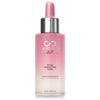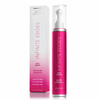
What Is Hair Weaving? How Effective Is It? Is It for You?

Many people have opted for a weave at one time or another simply because they desire a lengthier, fuller, and thicker hair, a more attractive appearance, or because they no longer fancy the texture and looks of their natural hair or need something different from bald patches. Have you ever come in contact with such?
Note, the hair woven into the natural hair can stand to be any color, length, and texture, the person's choice. However, it can be more lovely, beautiful, and eye-catching. Blonde hair, long hair, or short curls can obtain a hair weave that will give the person a gold look down to her waist.
Interestingly, we often encounter people with gorgeous regrown hair that previously had bald patches or high foreheads.
After suffering from severe hair loss, how can you grow full-grown, thick, and beautiful hair, the type we are talking about? Note that these aren't hair wigs but rather a hair weaving method.
In this article, we will be exploring everything about hair weaves, what it means, how effective it is, who it is for, types of hair weaving, and methods of installing a weave. Sit still, and let's explore.
Hair Weaving, What Is It All About?
People frequently make the distinction between hair weaving and hair transplantation. It's a rare event, but it does happen. Hair weaving is a scalp-attached hair or extension system, while hair transplant surgeons and plastic surgeons perform hair transplant surgery.
Skilled and expert hair stylists usually perform hair weaving in the field of hair making, and the cost varies greatly depending on the level of expertise. Artificial hair extensions are connected to the natural hairs on the person's sides of the head when a patch of baldness arises across the scalp. It is primarily known as weave ties. They're connected in such a way that regular tugs and pulls won't loosen the extensions.
However, the weaved area grows in proportion to the size of the bald patch; thus, additional extensions are fixed. These hair ties promote 'traction alopecia' of the natural hair follicles, which causes the bald patch to become wider over time. These hair ties are routinely removed to dry the scalp and refix the hair extensions at least within the space of 2-month or 6-7-months.
However, hair weaving can be done on any section of the hair. Hair weaving, despite being a complex technique, can be a gratifying operation for many people when carried out by professionals. It can offer a person a stunning appearance and make them more appealing.
How Effective is Hair Weaving?
Apart from the aesthetic value of hair weaving, people with alopecia areata, or ordinary baldness like its effectiveness since it works so well for them. Hair is attached to the scalp of the individual hairs during the weaving process.
Hair weaving, on the other hand, might be harmful to your scalp. The hair on your scalp is glued to your scalp using synthetic chemicals.
Hair weaves that are fixed without utilizing glues or adhesives usually do not cause damage to your hair. Cornrow weaving can produce traction alopecia, which can exacerbate baldness. When performed by a professional hairstylist, it usually does not have any long-term adverse effects.
Is Hair Weaving For You?
You'll benefit from hair weaving if you want to look attractive and hide your bald spots. However, if a person is confident in their appearance, it might help them achieve success in other areas of their lives. Fortunately, there are many options to select from when it comes to hair.
The possibilities are practically unlimited, from tone to how long the hair is to updos and undercutting. Nevertheless, the procedure or trend sought after, it is crucial to select high-quality services and supplies, as well as perform regular maintenance, to ensure that the effects last as long as desired and that you accomplish your aesthetic goals.
Advantages Of Hair Weaving
Hair weaving does not involve any medical procedure; it is done by a professional hairstylist. So, regardless of a pre-existing medical condition, anyone can have their hair weaved to their desired style.
Weaving is significantly less expensive than any type of hair fixing. Interestingly, the results are immediate because the extensions rapidly cover up the bald spots.
The technique is quick if the hair weave supplied is of the appropriate color and style. Hair weaves allow you to experiment with different hues and textures.
Hair matching has improved in recent years, resulting in a more natural appearance. Because the technique is non-invasive, it is painless and quick.
The initial money paid for service Is usually lower, but it may increase over time as a result of more follow-up and care.
Disadvantages of Weaving Hair
Hair weaving has several drawbacks, even though it is a non-surgical procedure. Let's start with the most noticeable one, an unnatural appearance.
People can quickly detect hair weaves, even with the most excellent hands. And once they've been discovered, they're likely to be somewhat uncomfortable.
Hair weaves are impossible to remove regularly to wash the scalp properly. As a result, scalp hygiene is frequently damaged quickly, resulting in dandruff, a foul odor, and so many hair infections.
However, some of these hair infections can result in irreversible hair follicle loss. Due to intensified scalp sweating throughout the summer months, the situation gets worse.
Methods of Weaving the Hair
Bonding, wefting, fusing, sewing, net weaving, and braiding are some of the most often utilized weaving techniques. However, hair extensions can be either hereditary or artificial. Here are some of the methods explained.
-
Net Weaving Technique
The net weaving technique is a long-lasting weaving process that's mostly excellent for people who are thinning-balding. Braiding natural hair and fastening a narrow covering net on the braided hair is done in this procedure. This net now acts as an exterior for the weaves. It can endure for two to three months with proper care and upkeep.
The advantage of this treatment is that, unlike the fusion method, it does not harm the hair. You can as well wash your hair at least once weekly, as long as you properly dry it. This process involves weaving wefts onto the net without harming the original hair.
This procedure can give the weave a perfectly natural appearance. To begin applying for extensions, separate the natural hair at the center of your head to be able to make a cornrow. The fake is now placed right at the start of the cornrow braid.
This technique is highly difficult and should only be performed by an expert hairstylist. Artificial hair extensions can be blended seamlessly with natural hair to create a gorgeous appearance.
-
The Sewing Technique
Micro crocheting and Italian weaves are two more crafts that might take up to a year to complete. Micro crochet weaving, which is a safer alternative to hot or cold fusion fixing methods, is sewn with a pin clip crochet needle and weaved into the natural hair; however, it can be done within eight hours or more.
Brazilian knots or Italian weaves are comparable to micro crochet that includes no braiding, bondings, fashionable beads, or special styling tools and is applied after the other with a particular threading technique.
However, the Brazilian knot technique offers a lot of flexibility in terms of hair kinds and colors, how to style, and fixing the period can take up to fifteen hours and a little more.
-
The Bonding Technique
The bonding sear technique weaving is a popular method in which the hair is divided into multiple portions or sections, and the weaved side hairs are bonded to the natural hair near the scalp. It's a well-known temporary weaving procedure that adds volume or brilliant color stripes to human hair.
This is, however, a weaving method that does not last for a longer time and does not harm the natural hair. After a while, tracks are made away with to avoid causing any damage to the natural hair. The use of medical glue to affix wigs is another type of bonding procedure. There are two sorts of bonding methods: soft bonding and hard bonding.
-
The Fusion Technique
Fusion hair weaving is one of those processes that creates a natural appearance by making the weave unidentifiable from the original hair. Here, they make use of a machine to bind natural hair strands together. The natural hair must be positioned into multiple thin and slender portions for this to work.
Nevertheless, the machine to be used is then heated, allowing the new hair to adhere to each of the sectioned hair strands. However, the intense heat applied can cause damage, necessitating extra attention and measures.
Furthermore, this process is both costly and time-consuming, but it can provide a natural look while allowing the hair to be cleaned and maintained as before.
A new technology called cold fusion is now available, which does not demand the use of a heated machine. The procedure has not gained enough popularity as bonding and tracking procedures due to loss and skin burn hazards.
-
Wefting Technique
Another way of fixing weaves is the wefting method, which consists of long hair strands with a seam, along which clips are affixed to fasten the portion to one's hair. Because of the variety of colors and lengths readily available, a weft can make the hair appear thicker and lengthier. It is popular among young adults.
Hair weft curtains are also available in unnatural and pure human hair varieties. Hair wefts, unlike many other hair extension alternatives, such as weaves, are usually made up of lengthy sections that are glued or bobbed into one's natural hair. This is in contrast to the time-consuming possibilities of unique hair application procedures or weaving the hair additions into the person's natural hair.
-
Track Technique
Another type of sectioning is the tracking sewing method, which entails plaiting the natural hair into multiple tracks on the head. A few concentrically braided circles are produced and sewed here. The weave or hair is now attached to the sewn braids horizontally across the head. Your natural hair is usually plaited into cornrows to sew the weaved hair.
In this technique, the natural hair is weaved into sections, which are called 'track.' The weave is made up of a few tracks. However, this style of weaving, on the other hand, takes a great deal of attention and can only be done well by an expert. For a full head weave, however, the entire head is braided.
However, the plaited hairs can either be sewed or wrapped with a net in a whole head weave. After that, the hair extensions and tracks are stitched to the braids according to the look you want.
Conclusion
Finally, paying close attention to the method utilized is essential to avoid inflicting injuries on the weave scalp, which can happen at the time of attaching the phase or as a result of stress from putting on the same hairstyle for an extended period.
Traction alopecia is a type of hair loss that occurs in the front hairline or above the ears as a result of wearing certain tight hairstyles for an extended period, such as using weaves. Hence it's essential to go for weaving styles that won't be so right or cause so much stress to your scalp.






























